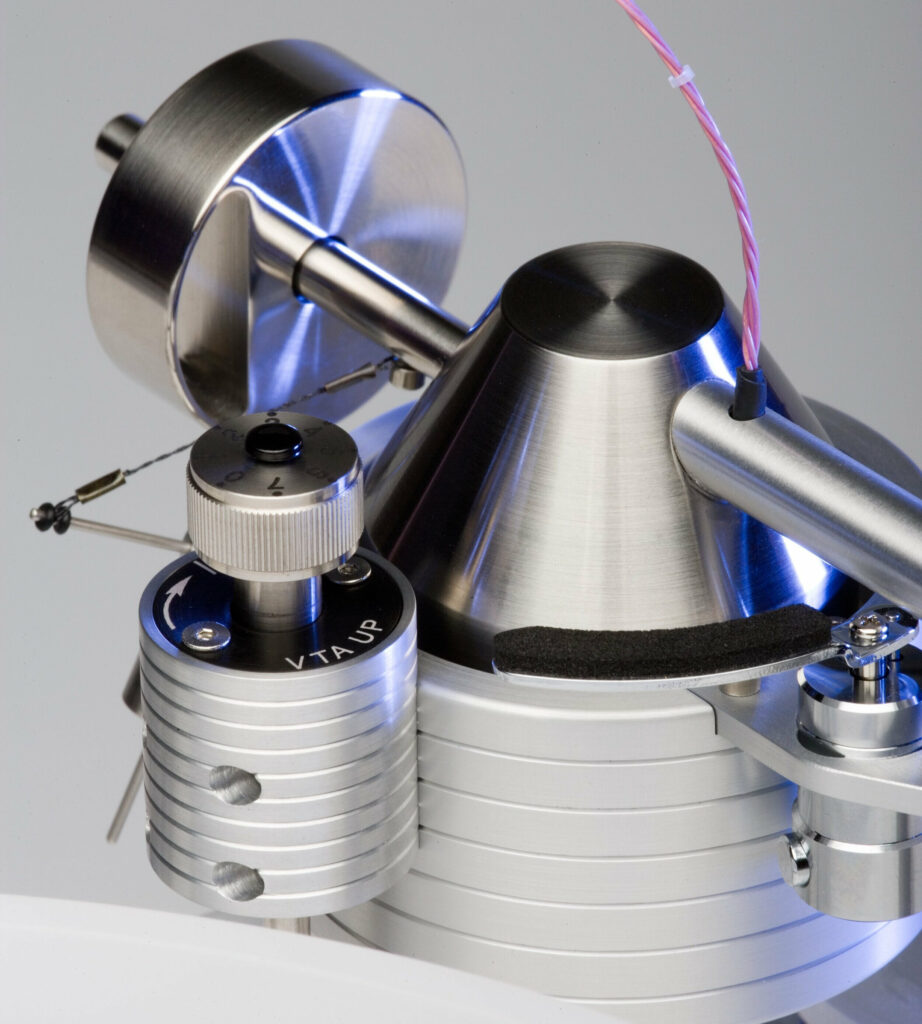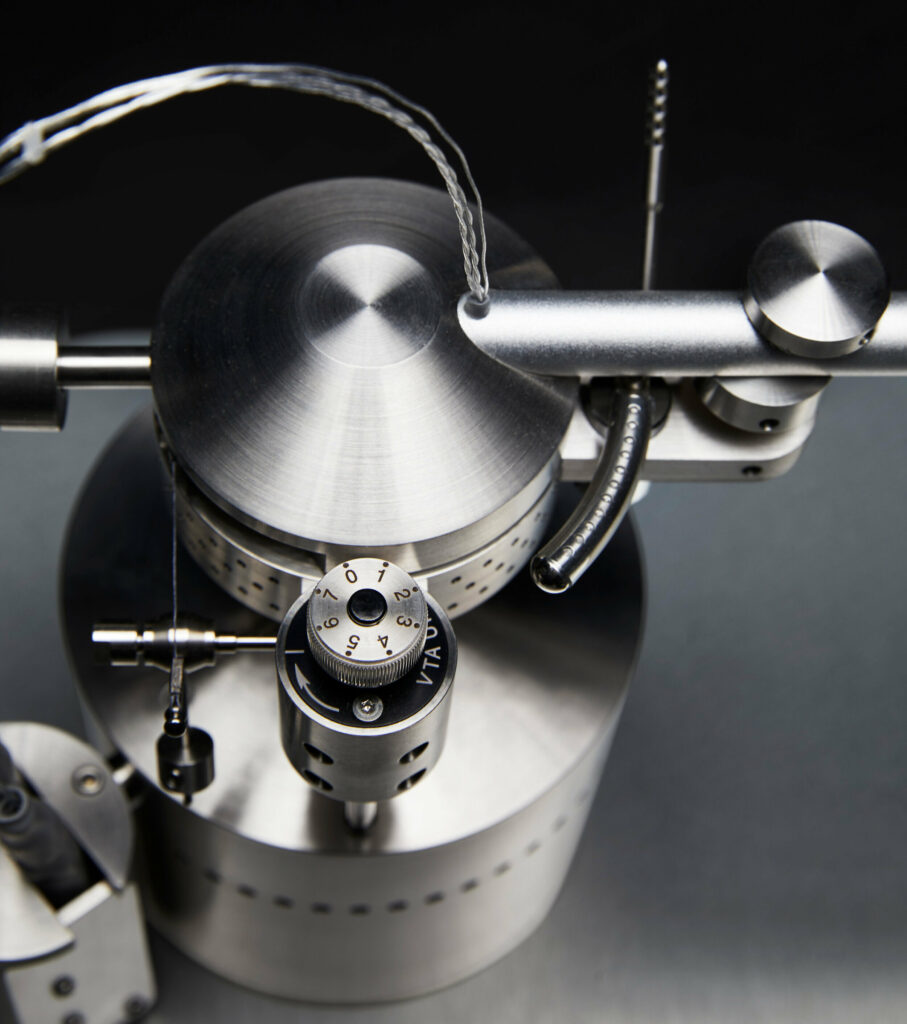VTA Micrometer
The Vector tonearm immediately reset the standard for tonearm performance when it began shipping in November 2001. No tonearm had ever shown the tracking ability of the Vector, which could track even the most difficult inner grooves of the most difficult records when fitted with any good moving coil cartridge.
The amazing performance of Basis tonearms is due to the single-minded pursuit of performance in the design process. All design efforts in the development of the Vector and SuperArm were based on attaining the ultimate level of performance. The vestigial fingerlift on the headshell and the cueing mechanism were the only items directed toward anything other than performance, and those items were only included after proving that they did not detract from performance in any way. In fact, the reason for the short fingerlift, as compared to the longer, thinner, curved-style fingerlifts too commonly seen, was to drive the resonant frequency of the fingerlift at least one full octave above the audio range.
The focused pursuit of performance initially dictated that Basis tonearms be without a VTA (Vertical Tracking Angle) indicating mechanism. All such mechanisms on other tonearms introduce parts that resonate at audio frequencies with a resulting coloration of sound and tracking limitations. Most such mechanisms also introduce a secondary, parallel vibration path to the base of the tonearm or turntable, decreasing the effectiveness and directness of the vibrational path into the turntable. Secondary vibrational paths compromise the ability of the tonearm to respond to sudden musical transients at the critical leading edge and to reproduce a sudden end of a musical note or detail. The Vector and SuperArm tonearms channel all energy through a central, firmly gripped and non-resonant main mounting shaft.

VTA MICROMETER DEVELOPMENT
During the first two years of Vector production, designer Armando (A.J.) Conti devised various methods of determining VTA position without compromising sonic quality. The simplest method was chosen, which is now available as the VTA Micrometer System. The VTA micrometer determines the relative distance between the tonearm base and the tonearm subchassis.
ADJUSTING VTA SETTINGS ON A BASIS TONEARM
To adjust the height of the tonearm, the VTA knob is turned until the tip of the VTA system makes contact with the turntable surface. Then, the set-screw which holds the tonearm in place is disengaged, fully transferring the vertical load of the tonearm to the VTA system. Now, the height of the tonearm, and therefore the Vertical Tracking Angle, can be adjusted by turning the VTA knob in either direction. Once the desired position is found, the set-screw is locked, and the VTA knob may be turned turn to lift the VTA Micrometer tip off the turntable surface. Totally disconnected from the turntable in this configuration, the full performance of the Vector or SuperArm without VTA system is preserved. The VTA Micrometer System on Basis tonearms is unique as the only VTA indicating system which does not impair tonearm performance in any way.
AVAILABILITY ON BASIS TONEARMS
The Vector VTA Micrometer may be added to any Vector ever produced. Some earlier Vectors may need to be returned to Basis for slight modification to accept the VTA Micrometer.
A VTA Micrometer system comes standard on every SuperArm.
